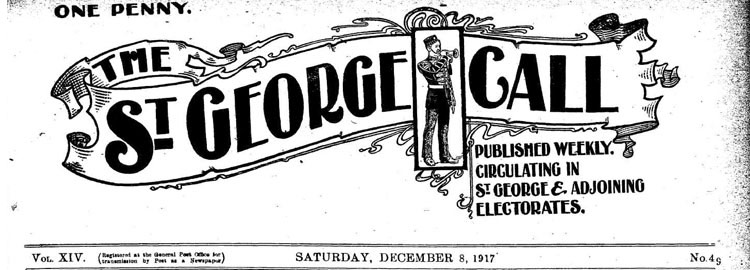

Outback journal ‘The Bulletin’, August 1890
From the earliest days of Australian settlement, a tension has existed between city and country. In the 1890’s bush poets and writers Banjo Patterson and Henry Lawson, in journals such as The Bulletin, debated the merits of life… in the city or the bush. Whilst Patterson romanticised the bush and its people, Lawson drew more sober scenes… of drought, of burning wastes, of barren soil.
But on one issue both men agreed – life in Australia’s great cities differed in almost every respect to life in country towns, bush and out-back communities, the mines, and on the far-flung farms and stations. Down through the decades this real or imagined difference has become known to many Australians as… the Great Divide. Since these early days, the media has played a critical role in telling the real story of the bush. Almost every country town, regional centre and regional city has a Newspaper or Broadcaster that has endured drought, fires, floods, financial hardship, corporate restructures, new ownership, the of course, the digital revolution.
Quite remarkably, many still survive by keeping the formula as simple as possible:
- Local stories about local people and local issues
- Community commitment, ideals and values
- Tough but fair commentary
- Family values
- Sport, Weather & News (In that order!)
When we started Redhanded back in 2002, we recognised media played a critical role in the service we would offer clients of Redhanded. Having lived and breathed it throughout our childhoods and then in to our professional lives, the rural and regional media consistently reveals a uniqueness that is blatantly inconsistent with the way urban populations view the media’s role, its content and its independence.
To understand rural media, is to experience it. See it, read it, hear it, click on it! You cannot do that with Bots, Ivory Towers or inexperienced graduates punching out numbers on formulated spreadsheets. At Redhanded, we believe that although media measurement is critical, we are not blinded by the numbers. Insight is what drives understanding when delivering engaging media strategies that connect.
Media choices define a person as much as anything else – their ute, boots, chemicals, tractors, bank or even the beer they drink. Understanding the effect of the media environment upon a brand enables us to exploit this. With this insight, we can develop ideas, which strengthen clients brands and relate better with consumers. The goal is to see beyond the numbers – avoid the blindness they can create, and come to an understanding of what the real issues and opportunities are.
So, where does the insight live? How do you curate it and how do you balance insight with the hard facts of audience numbers?
Well for a start, it doesn’t come from treating the media as an ordinary supplier. Here at Redhanded, we treat the media as a partner. The relationship is firm, but fair. They don’t ask for favors, we don’t give them, but they want to be engaged, deserve to be engaged and can deliver value when they are engaged. The rural and regional editors, journalists, publishers, radio hosts, commentators, blog posters etc. are your window to the world of your customers. They drive agenda’s, political and otherwise, they solicit feedback, they listen and they always provide two sides to a story. Ignore them at your peril!
Our Media Director Samantha Gray wrote in her blog just over a year ago, that “as our media marketplace becomes increasingly sophisticated, complex and diverse, it’s becoming harder to make sound media decisions. The growth in the digital landscape has further fueled this. We now have at our disposal huge volumes of data that help us understand our audience and anticipated return on investment. Armed with this sea of data are we missing some of the fundamentals of building brand equity?.”
“Are we sometimes so targeted and cost efficient that we are failing to really communicate our desired brand positioning?”, asked Sam. Whilst the rural and regional media keep producing good quality content from the farm gate; in the schools, and in the communities they live, work and play, then it is our enduring belief that strategic media decisions shouldn’t be based exclusively on CPM, TARPS, CTR’s, UB’s, PI’s and audience share.

Sometimes the media is the message and to truly engage readers, viewers and listeners, we need to actually harness this relationship in a collaborative way. We should be mindful of the company we keep, not just with the placement of our clients advertising, but with the combined content we bring to both of our consumers.
Jim Gall is Managing Director of Redhanded Communications Group